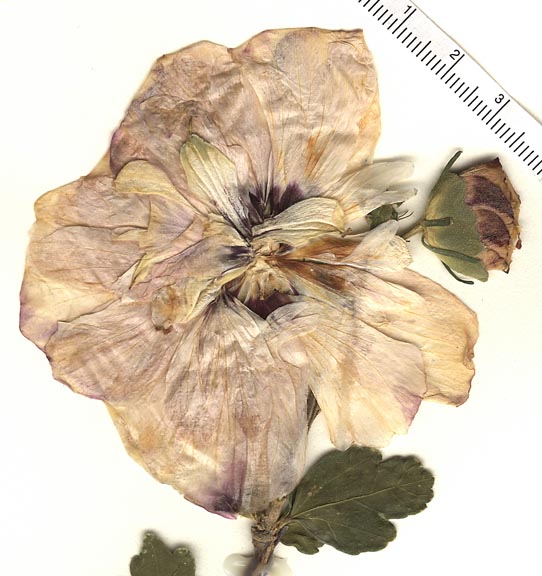Hibiscus
|
Family: Malvaceae |
PLANT: Subshrubs, shrubs, or trees (rarely herbs), variously pubescent or hispid to glabrescent. LEAVES: ovate to elliptic, sometimes lobed or parted, dentate or less often entire; abaxial foliar nectaries present or absent. FLOWERS: usually solitary in the leafaxils, sometimes aggregated apically; bracts of involucel 8-10(-20); calyx 5-lobed; corolla of various colors, sometimes with a dark center; staminal column apically 5-dentate; styles 5, with capitate stigmas. FRUITS: capsular, ovoid or oblong, glabrous or pubescent. SEEDS: hirsute or glabrescent (in ours silky-pubescent), several per locule. NOTES: Ca. 200 spp. from all warmer parts of the world and in some temperate areas. (Greek hibiscos, mallow, derived from Ibis, an Egyptian deity). Fryxell, P. A. 1980. Techn. Bull. U.S.D.A. 1624. pp.1-53. REFERENCES: Fryxell, Paul A. 1994. Malvaceae. J. Ariz. - Nev. Acad. Sci. Volume 27(2), 222-236. Bractlets of the epicalyx numerous, commonly about 12, linear; stamen- column with anthers along the sides; style-column prolonged, bearing 5 short branches with capitate stigmas; cor large; ovary 5-locular; ovules several in each locule; fr a subglobose to ovoid or prismatic, loculicidal capsule subtended or enclosed by the persistent, accrescent cal; seeds glabrous or roughened or hairy; annual or perennial herbs or shrubs, mostly with large fls. 200+, mostly warm reg. Gleason, Henry A. & Cronquist, Arthur J. 1991. Manual of vascular plants of northeastern United States and adjacent Canada. lxxv + 910 pp. ©The New York Botanical Garden. All rights reserved. Used by permission. |

